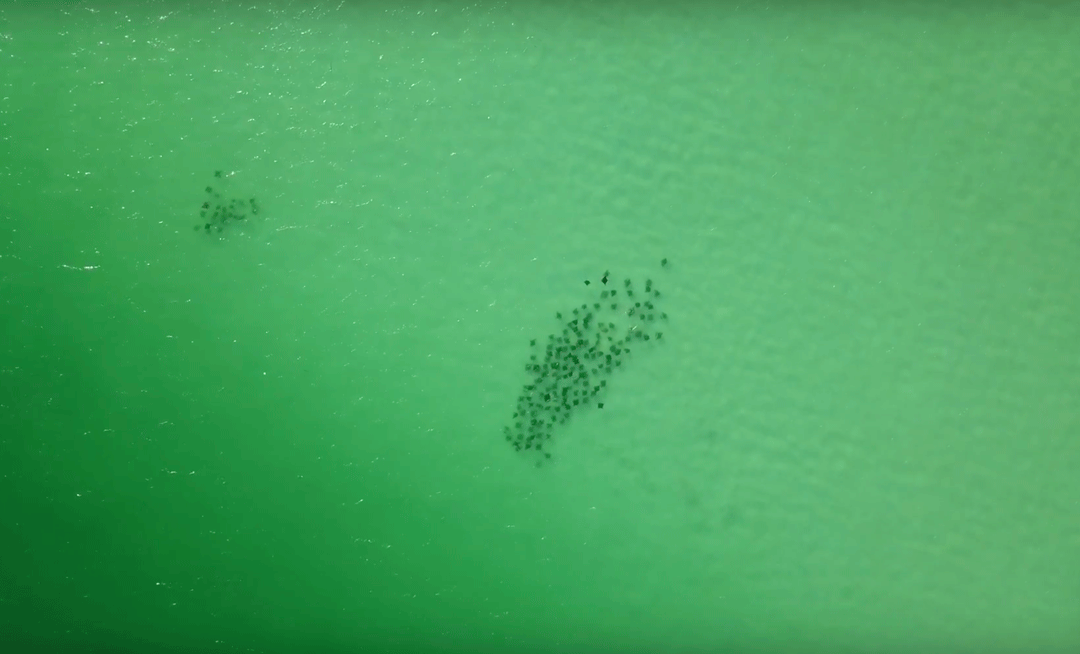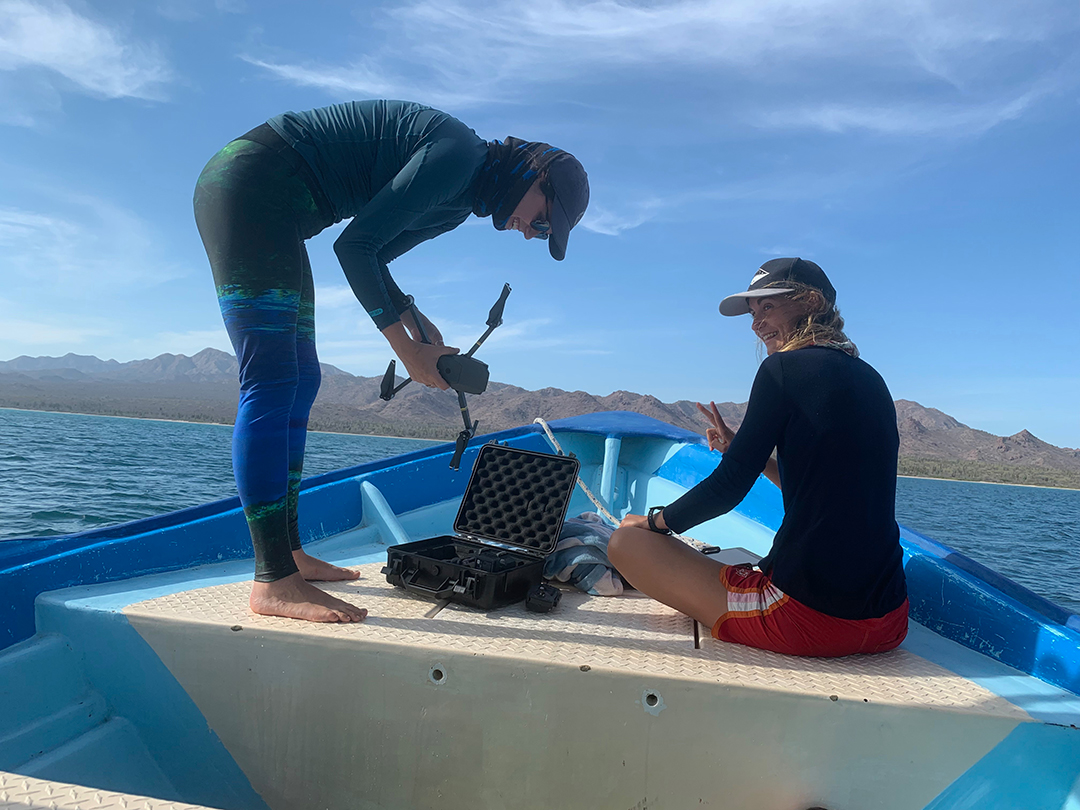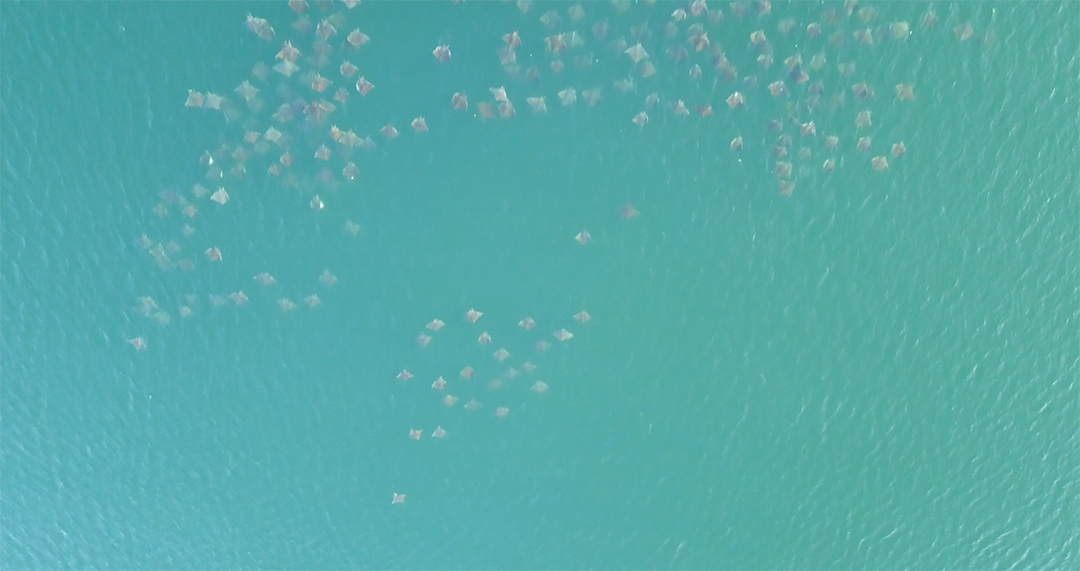Using a drone to spy on devil rays from above
You’d be surprised how difficult it is to find devil rays with the naked eye—even when they gather in the hundreds and thousands. But with a drone, that mission becomes a whole lot easier.
While we were in Baja California Sur, Mexico, this past field season working on our project to understand the population genetics of manta and devil rays, we couldn’t resist bringing a drone along to capture some aerial footage of these spectacular animals. Especially considering the schooling behaviour of some devil ray species—which at times gather in groups numbering in the hundreds of thousands, jumping and flopping around in spectacular scenes.

Photo © Melissa Cronin
We brought the drone to Isla El Pardito, where the Conservation Action Lab has worked for more than a decade, researching endangered hawksbill sea turtles, manta and devil rays, and small-scale fisheries.
Flying the drone wasn’t an easy task. Conditions have to be just right: avoid glare on the waves from sunlight, not too much wind, and most important of all—don’t launch from nesting sites where pesky seagulls threaten to dive-bomb your drone into oblivion. Most importantly, it is absolutely essential to finish drone-flying before 7 pm, when an army of tiny, hungry sandflies, known as jejenes, will swarm the drone operators, leaving bite scars for months.

Photo © Melissa Cronin
What’s more, the window for devil ray drones is short: for the species we were most interested in, Munk’s pygmy devil ray (Mobula munkiana), the time of greatest activity at the surface of the water is just before sundown. It’s this time, when the water is glassy-smooth and warm at its surface, that the devil rays emerge in the top of the water column. First, they’re visible just by the tiny tips of their pectoral fins, which peek just above the waves. But soon enough, they’re forming enormous groups, often leaping into the air and crashing down with incredible slaps.

Photo © Melissa Cronin
Working in collaboration with Nerea Lezama-Ochoa, another SOSF Project Leader, as well as fishermen based on Isla El Pardito in Baja California, Sur, we used the drone to try to test the feasibility of using this type of technology for research. While our early forays are more out of curiosity than for scientific study, some fascinating research has used drones to study hard-to-reach marine animals, including sharks, whales, and sea turtles. We hope that someday this technology can be used to gain critical information about these aggregations. This is an important question to answer because one of the primary threats to this species and other mobula rays like it is fisheries bycatch, or the unintended capture in fishing nets. When rays are in such enormous schools, they are more vulnerable to being scooped up all at once in big bycatch events. Knowing where, when and why these aggregations happen could help us figure out how to protect them.
But for now, getting a rare glimpse of these incredible species is certainly an added bonus.
Our work in Baja is done in collaboration with Dr Felipe Gavan Magaña and the Proyecto Tiburones y Rayas at the Centro Interdisciplinario de Ciencias Marinas (CICIMAR-IPN) in Baja California Sur. Our genetics project is made possible by collaborators and stakeholders including Manta Trust, the Molecular Ecology & Evolution of Fishes Lab at the University of California, Santa Cruz, the Monterey Bay Aquarium, and tuna fishing fleets, observers, and vessel owners.
